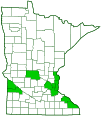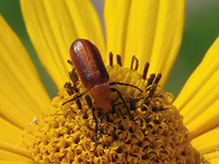brown blister beetle
(Zonitis vittigera)
Conservation • Description • Habitat • Ecology • Distribution • Taxonomy
|
|
||||||||||||||
Description |
Brown blister beetle is also called orange blister beetle, but that common name is used for another. Brown blister beetle is mostly orange, reddish-yellow (tawny), light brownish-red, or brownish-yellow. The hardened wing covers (elytra) have a black longitudinal stripe that varies in size between individuals. Sometimes the elytra are almost entirely black. They are moderately densely covered with shallow punctures. On each leg, the third leg segment (femur) is black at the tip; the fourth leg segment (tibia) is mostly black; and the end part of the leg (tarsus), corresponding to the foot, is mostly black. |
Size |
Total length: ¼″ to ½″ (7 to 12 mm) |
Similar Species |
Habitat |
|
Ecology |
Season |
May to August |
Behavior |
|
Life Cycle |
|
Larva Food |
|
Adult Food |
|
Distribution |
||
|
Sources |
|
| 6/24/2024 | ||
Occurrence |
||
|
||
Taxonomy |
|
Order |
Coleoptera (Beetles) |
Suborder |
Polyphaga (Water, Rove, Scarab, Long-horned, Leaf, and Snout Beetles) |
Infraorder |
Cucujiformia |
Superfamily |
Tenebrionoidea (darkling beetles and allies) |
Family |
Meloidae (blister beetles) |
Subfamily |
Nemognathinae |
Tribe |
Nemognathini |
Genus |
Zonitis |
Subgenus |
Parazonitis |
Subordinate Taxa |
|
brown blister beetle (Zonitis vittigera propinqua) brown blister beetle (Zonitis vittigera vittigera) |
|
Synonyms |
|
|
|
Common Names |
|
brown blister beetle long-tongued blister beetle orange blister beetle |
|
Zonitis vittigera is known by the common name orange blister beetle, but another beetle, Nemognatha piazata, is also known by that common name. Zonitis vittigera is sometimes given the common name brown blister beetle. To avoid confusion, that name will be used here. |
|
Glossary
Elytra
The hardened or leathery forewings of beetles used to protect the fragile hindwings, which are used for flying. Singular: elytron.
Femur
On insects and arachnids, the third, largest, most robust segment of the leg, coming immediately before the tibia. On humans, the thigh bone.
Tarsus
On insects, the last two to five subdivisions of the leg, attached to the tibia; the foot. On spiders, the last segment of the leg. Plural: tarsi.
Tibia
The fourth segment of an insect leg, after the femur and before the tarsus (foot). The fifth segment of a spider leg or palp. Plural: tibiae.
Visitor Photos |
||
Share your photo of this insect. |
||
This button not working for you? |
||
Maureen Burkle |
||
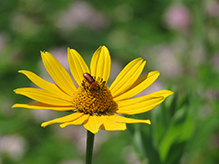 |
||
Greg Watson |
||
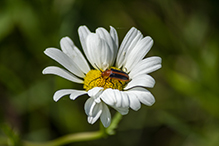 |
|
|
| Looks like a brown blister beetle on this daisy. |
|
|
Alfredo Colon |
||
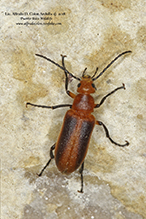 |
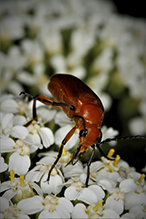 |
|
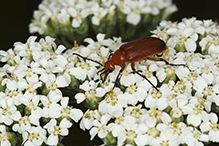 |
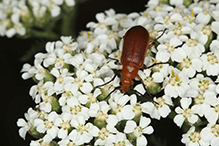 |
|
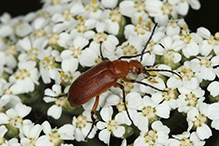 |
 |
|
MinnesotaSeasons.com Photos |
||
|
||
|
||

Slideshows |
|

Visitor Videos |
||
Share your video of this insect. |
||
This button not working for you? |
||
|
Other Videos |
||
|

Visitor Sightings |
||
Report a sighting of this insect. |
||
This button not working for you? |
||
Maureen Burkle |
Location: Olmsted County |
 |
| Greg Watson 7/2/2021 |
Location: Great River Bluffs State Park Looks like a brown blister beetle on this daisy. |
| Alfredo Colon 8/17/2018 |
Location: Woodbury, Minnesota |
| Alfredo Colon 6/12/2018 |
Location: Woodbury, Minnesota |
MinnesotaSeasons.com Sightings |
||
|

Created: 6/9/2019 Last Updated: © MinnesotaSeasons.com. All rights reserved. |
